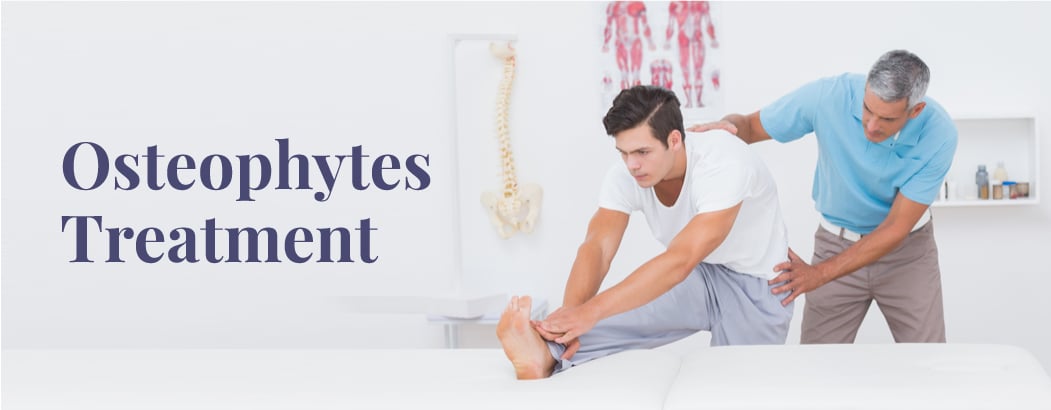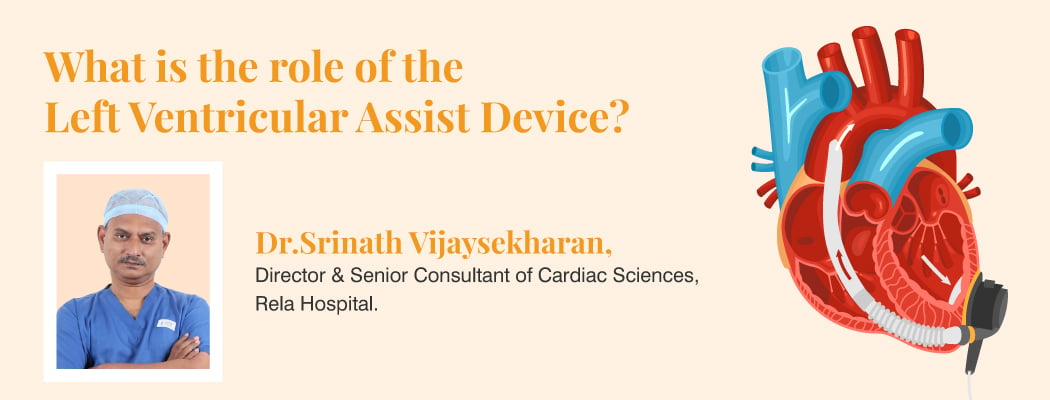Osteophytes Treatment
October 18, 2023

Osteophytes Treatment
What are Osteophytes?
Bone spurs are more commonly known as osteophytes, and they are made with bony projections usually seen at the edge of bones. These normally manifest themselves in joints as individual bones come together to form connections. These could also be due to age-related wear and tear, and osteophytes could be caused by osteoarthritis. The presence of these bony growths causes problems such as pain, restricted motion, and reduced flexibility. At times, they may not even show any symptoms. The treatment of such lesions usually involves treating the cause, alleviating pain, relieving inflammation, and enhancing mobility, among others.
Table of Contents
- What are osteophytes?
- Types of Osteophytes
- Symptoms
- Conservative Treatments
- Medical Interventions and Prevention Strategies
- Conclusion
Types of Osteophytes
There are many other names for these osteophytes, such as the bone spurs that develop in different parts of the body. The most common types of osteophytes include:
- Cervical Osteophytes: These bony spurs grow along the cervical spine (the portion that lies around the neck). Cervical osteophytes may cause neck pain, stiffness, and problems moving the head and neck. Sometimes, they may squeeze neighboring nerves, causing pain radiating towards the arm with pins and needles.
- Lumbar Osteophytes: Osteophytes of the lumbar are known as lumbar osteophytes and hence occur at the lumbar spine. The bone spurs give rise to low back pain, rigidity, and restricted motility. Additionally, they are also linked with pathology that involves spinal stenosis, whereby it becomes a narrow channel, causing spine as well as weakening its leg muscles.
- Hip Osteophytes: One of these is osteophytes in the hip joint due to other pathologies like osteoarthritis. It can lead to pain in the hip joint, limited motion range, and even problems while standing. Many old people find hip osteophytes to be painful.
- Knee Osteophytes: Osteophytes of the knee often occur in knee osteoarthritis. This may result in pain, swelling, and grating or popping sensations inside the knee joint. The growth of these bone spurs usually contributes to the overall joint degeneration of the knee.
- Shoulder Osteophytes: Shoulder joint osteophytes are one of the symptoms that rotator cuff tears or an arthritic condition may cause. This condition may cause shoulder discomfort, restricted movement, and difficulty lifting or moving an object by using the shoulder.
- Hand and Finger Osteophytes: Osteoarthritis or degenerative joint disease can cause osteophytes in the hand and fingers. Such complications may lead to pain, swelling, and inflammation of the affected joints, complicating carrying out fine motor duties.
- Ankle and Foot Osteophytes: The presence of osteophytes in the ankle and foot regions causes pain, restricted joint movements, and issues associated with walking and putting on shoes. Such may be linked with some issues, such as ankle osteoarthritis.
Symptoms
- Pain: These osteophytes cause pain at certain specific points, particularly when they pinch on nerves and other delicate tissue material. Such pain can be acute or chronic, and it is exacerbated by movements and pressure on the affected area or area of affection.
- Limited range of motion: The formation of osteophytes may hamper the usual movements of joints, resulting in stiffness and loss of flexion. A limitation of this kind can have a very serious impact on what we are able to do in our lives on a day-to-day basis.
- Swelling and tenderness: Sometimes, osteophytes will result in swellings surrounding the joint or even lead to its tender points. It might lead to a sensation of warmth as well as tactile sensitivity.
- Numbness and tingling: Osteophytes are bony outgrowths that arise on joint surfaces and may result in the sensation of numbness, tingling, or pins-and-needles when they compress nerves surrounding this site. It may result in pain and obstruct normal senses and movement.
- Muscle weakness: Osteophytes exert pressure on the surrounding soft tissue structures, including muscular tissue, which compromises strength and diminishes muscular functions. Such muscle problems may lead to complications during those movements that involve their application.
- Joint instability: Osteophytes become increasingly painful as they develop, giving rise to joint instability and complicating walking and bearing weights.
However, it is important to note that osteophytes do not always cause problems for everyone. In other words, some people may have osteophytes but not experience any negative consequences. Nonetheless, this may have serious consequences whenever such symptoms appear, causing significant interference with patients’ health quality. If you suspect you have osteophytes or are experiencing some of the symptoms listed above, you should seek evaluation and treatment. These patients receive a variety of treatments, including medication, physical therapy, and, in severe cases, surgery.
Conservative Treatments
Some common conservative osteophytes treatment include:
Pain management
NSAIDs that can be purchased over-the-counter, such as naproxen or ibuprofen, can help reduce osteophyte pain. Acetaminophen can also be used to relieve pain, but without the anti-inflammatory effect associated with NSAIDs.
Physical therapy
Some particular exercises, coupled with specialised physical therapy programs, are crucial in increasing joint mobility, supporting the surrounding muscles, and improving general joint functions. Physical therapists create such exercise programs to target an affected joint with the goal of increasing flexibility, improving overall range of motion, and building muscles around that joint.
Hot and cold therapy
Applying hot and cold packs alternatively to the affected area may be used to relieve aches and swelling. Cold therapy will limit the swelling, while heat therapy increases the relaxation of muscles, improving blood supply.
Lifestyle modifications
One can manage OA-related pain by making lifestyle changes like maintaining a moderate weight, doing joint-protective exercises, and refraining from aggravating symptoms in their daily activities. Other supporting apparatuses, like braces or orthotic inserts, can also provide extra relief by supporting the problematic joint.
Assistive devices
Mobility aids can reduce joint stress and enhance stability, especially when cartilaginous osteophytes affect weight-bearing joints.
Low-impact exercises
It is possible to keep joints flexible and muscles strong with minimal impact on affected joints by indulging in light exercises such as swimming, cycling, or taichi.
Medical Interventions and Prevention Strategies
Bone spurs are a common problem among older women, which results in pain and limitations. Medical interventions and prevention exist for osteophytes, however. Here are some common approaches:
Medical Interventions
- Medication: NSAIDs may relieve osteophytes’ pain and inflammation. In other circumstances, steroid injections are injected into the joint itself as painkillers.
- Physical therapy: Some of the exercises in physical therapy include mobilizing stiff joints as well as strengthening other adjacent or surrounding muscles for better support and to help resolve pain related to osteophytes or spurs. They can be supplemented with therapeutic exercises and techniques that assist in increasing range of motion and flexibility.
- Surgery: In some severe conditions that cause constant pain and limit normal functions due to osteophyte presence, surgery may also be considered. Such surgical procedures may involve osteophyte removal, repair of damaged tissues, or total joint replacement by prosthesis.
Prevention Strategies
- Maintain a healthy weight: In addition, having excessive body weight puts extra pressure on the joints, making a person prone to osteopenia.
- Exercise regularly: Exercise every day, but on an appropriate scale, so it helps the development of muscle, increases joint mobility, and keeps a person feeling young.
- Proper posture and body mechanics: Good posture and proper body mechanics, particularly in the spine, help to prevent joint stress.
- Protective gear and equipment: Sports and physical exertion could be prevented from causing joint destruction and formation of oestephophytic processes by using suitable protective equipment.
- Healthy diet: Essential vitamins, minerals, and other necessary components form a balanced diet that assists in bone strengthening to prevent any osteopathic growths called osteophytes.
- Avoid repetitive stress: Avoiding repeating pressures on joints will help prevent the formation of osteophytes.
These techniques may be able to assist people in reducing their risk of osteophyte growth and managing bone spur-related symptoms that they have currently developed. In case you feel that you might be having osteophytes, contact your doctor for a proper and necessary prescription based on your conditions.
Conclusion
We can conclude that osteophytes, also called spurs, are primarily caused by ageing and arthritic disorders and grow on the margins of bones, particularly in joints. These growths could cause pain, a reduction in mobility, and other painful experiences, but a few patients have no signs, symptoms, or feelings. The treatment often focuses on treating the root cause, alleviating pain, reducing swelling, and enhancing movement. Some of these conservative measures, including pain management, physical therapy, and lifestyle changes, may help relieve some pain and improve joint function. Also, acute injuries that are severe, include medical interventions like medications, physical therapy, and surgeries that are well managed. People may also reduce osteophytes by controlling their weight, undertaking exercise routines, and having ideal body posture. Inclusion of these measures could help people reduce the effects of osteophytes on their body’s joints and, hence, lead healthy lives. Anyone with the symptoms or who believes that he has osteopenia should consult a health worker or physician in order to get a proper diagnosis as well as treatment.







